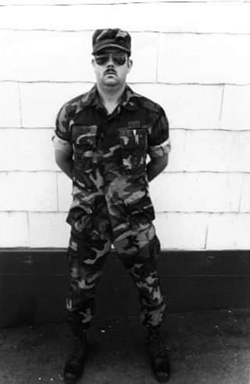Duane Kuhlow, Air Force Veteran
Communications Dispatcher, American Medical Response
Duane Kuhlow’s grandfather and cousin survived the bombing of Pearl Harbor on December 7, 1941. On that infamous day, they were aboard the USS California, a Tennessee-Class battleship that sustained damage from two torpedoes and a bomb. Their heroic service inspired Kuhlow’s father to join the U.S. Army and Kuhlow, himself, to join the U.S. Air Force.
There, Kuhlow distinguished himself in one of the most dangerous occupations the Armed Services has to offer: explosive ordinance disposal. He was trained to detect, disarm and dispose of explosive threats in the most extreme environments. He began his six-year career at the Air Force Weapon Training Center, testing and creating render-safe and disposal procedures for new weapons.
When he left the Air Force, he still wanted to serve and, remembering one of his favorite childhood TV shows, Emergency!, he began his civilian career as an EMT before moving into communications as a Dispatcher. He credits the military for much of his success.
“The military taught me how to organize and remain calm during tense situations,” he said. “I am also better able to see the big picture in a given situation. This helps me plan and organize EMS units in crisis situations and make changes on the fly.”
Areas Served
Kuhlow initially served stateside at the Air Force Weapons Training Center at Nellis Air Force Base. He was later stationed in South Korea, traveling throughout the country on various operations.
Rank Achieved
In his six years with the U.S. Air Force, Kuhlow earned the rank of Staff Sergeant (E-5). These Air Force NCOs are expected to exemplify:
- Personal integrity and loyalty
- Leadership, dedication and devotion to duty
- Air Force policies, traditions and standards
What Does Ordinance Disposal Entail?
Think of the movie The Hurt Locker. Kuhlow was part of what is essentially the Air Force bomb squad. They do what needs to be done to keep others safe and guarantee mission success, no matter the cost. These individuals:
- Are assigned to some of the most dangerous missions
- Perform tactically-harrowing and technically-demanding tasks in diverse environments
- Are some of the best and bravest Airmen

